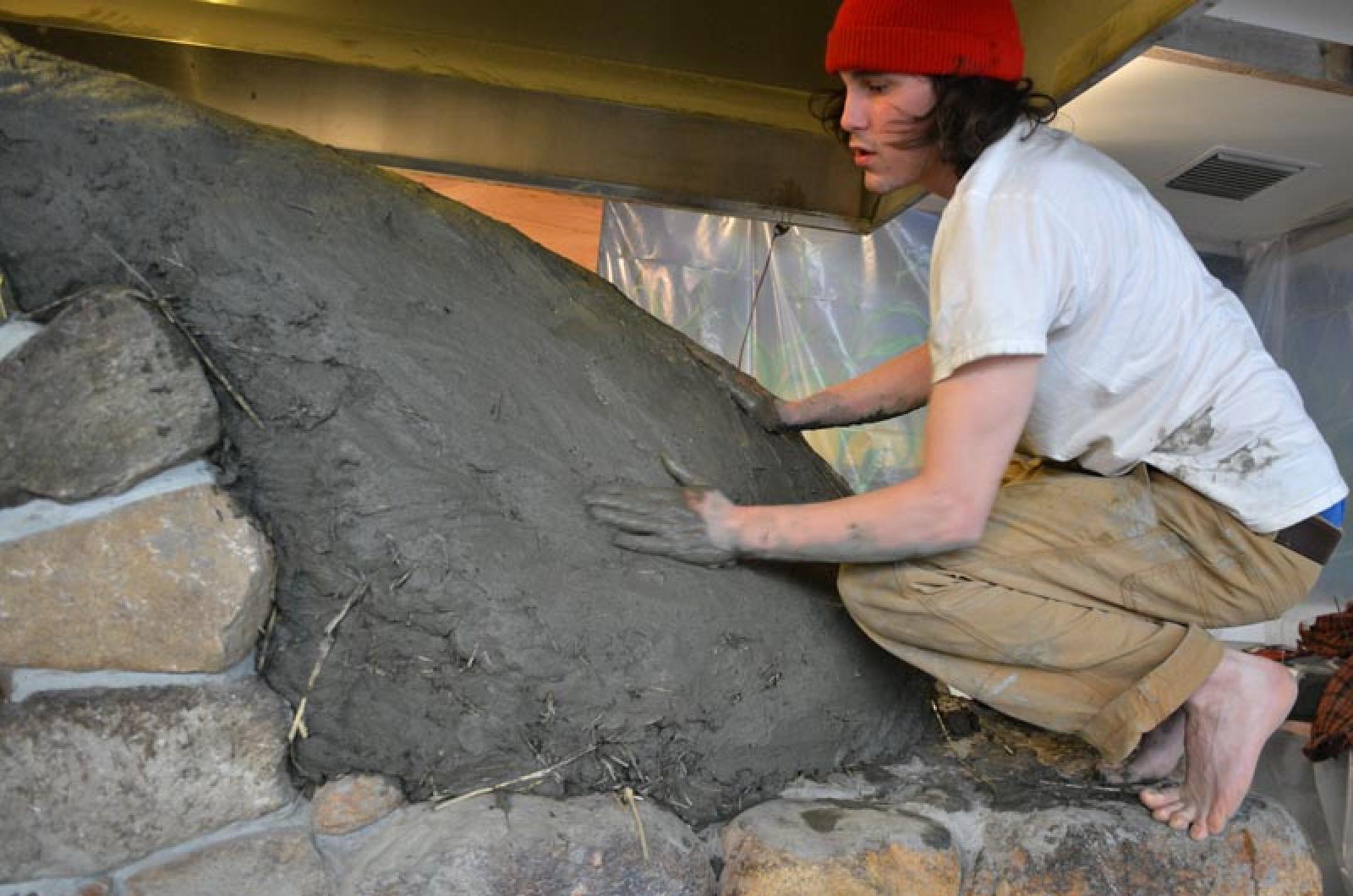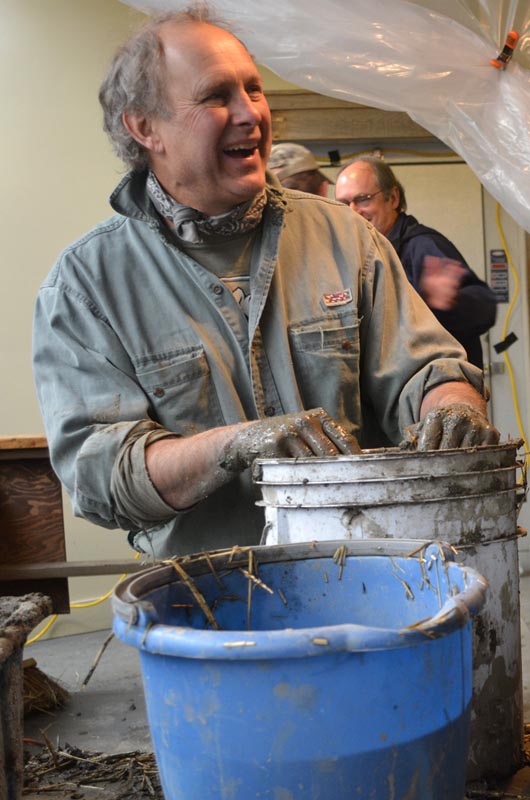At Flatbread Company last Friday morning the pizza restaurant looked less like a place to eat and more like an archeology site. Plastic tarps hung on the walls and floor, clay bricks and straw were piled high on tables, and a group of men climbed barefoot around the pizza oven’s sticky clay dome.
“They’re the oven building pros,” said the restaurant’s owner Jay Gould. “But as you can see, they can’t afford shoes,” he added with a laugh.
The crew, hailing from Vermont, went shoeless to get a better grip on the stone base as they slapped and patted the last few bricks of clay into shape. The oven builders included American Flatbread founder and oven master George Schenk and the company’s president Clay Westbrook. The men were in town to refurbish the oven built when Flatbread opened on the Vineyard three years ago. The old oven wasn’t burning efficiently. The new oven design will be able to use less wood and reach higher temperatures, said Mr. Schenk.
The clay dome is now a foot thick, and the bottom layer of soapstone is four times as thick as it was. Both materials have the potential to hold more heat.
“It makes pizza better and faster,” Mr. Schenk said. “It flash cooks the thin crust, but leaves the inside soft, to have a nice contrast of crunch and chew.”
Mr. Schenk adapted this particular design from 18th and 19th-century ovens in rural Quebec, and he built a similar oven for the original American Flatbread in Vermont in 1985.
“Pizza is only one of many iterations of flatbread,” he said. Historically, depending on what grain grew abundantly, cultures created tortillas, pitas, pancakes and more.
No matter the grain, the process was the same.
“Grind grain, mix it with a fluid, put it on a griddle,” Mr. Schenk said. “The oven is basically a griddle with a dome on top. I like bread, but pizza . . . It’s the definitive way to eat bread.”
And by selecting ingredients from local farmers, he could make a flatbread that was not just healthy but also inclusive.
So the restaurant became a pizza haven. In 1998 when Mr. Gould asked to franchise the company across the country, three criteria had to be met: use a traditional oven, source local ingredients and create a relationship with the community.
“That idea of a simple bakery that has farm-to-table sourcing lives here, too,” Mr. Schenk said of the Vineyard. “I’d say in some ways Jay does it better than me.”
The new oven will need to dry and cure for the next two months, just in time for this season’s opening on May 15.









Comments
Comment policy »